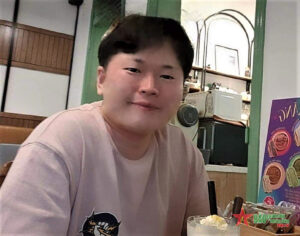
Vietnamese Tet Through the Eyes of Foreigners
Every Vietnamese Tet holiday, as spring arrives, people eagerly welcome a new season filled with hopes and good wishes, each with their unique perspective on Tet. For foreigners, whether they have experienced Tet in Vietnam or not, the Vietnamese New Year always offers fascinating discoveries.
What is Vietnamese Tet?

The Vietnamese Tet holiday in Vietnam is one of the most important and meaningful occasions in culture
Tet, according to the lunar calendar in Asia, is the most solemn and significant holiday celebrated by the Vietnamese each year. Based on the lunar calendar, which follows the movements of the moon, each month begins with a new moon. The New Year starts on the first moon that appears after the sun rises above the southern solstice, marking the final sign of winter.
Tet, therefore, follows both the lunar and solar cycles. Tet marks the arrival of spring and is referred to as “Tet Nguyen Dan,” or the “beginning of the dawn period.” This day signifies the start of the year, the month, and the season, making it the most sacred morning. It foretells the auspicious events of the moon that will unfold in the year ahead.
Foreigners’ Perspectives on Vietnamese Tet
Kim Ho Jun, a 27-year-old South Korean who has lived and worked in Vietnam for 8 years, has celebrated Tet here four times. For him, there are many similarities between Tet in Vietnam and South Korea. Both countries celebrate the Lunar New Year, and the Vietnamese Tet evokes deep emotions in him.
“In Vietnam, every Tet, families and individuals are busy preparing an indispensable dish — Banh Chung in the North or Banh Tet in the South. It doesn’t feel like Tet without Banh Chung or Banh Tet,” shared Kim Ho Jun.

Kim Ho Jun has spent four Tet holidays in Vietnam
Kim Ho Jun has had the chance to enjoy Banh Chung and Banh Tet during Vietnamese Tet and is very fond of their flavors. He finds it amusing when Vietnamese people ask each other, “How many Banh Chung seasons have you had this year?”—a playful way of asking someone’s age.
Vietnamese Tet and Korean Tet share many similarities, including the custom of giving Li Xi (lucky money) as a wish for luck and prosperity in the new year. During Tet, Koreans, like Vietnamese, have traditions of ancestor worship and visit relatives and friends to exchange New Year greetings. Additionally, Tet is a time for everyone to enjoy festivities, gather with loved ones, and share meals while catching up.
For Chen Guanglun, a native of Guangdong, China, Vietnamese Tet is full of fascinating traditions, especially the period leading up to the holiday. Much like in China, the days before Tet are bustling, with everyone immersed in preparations, and the festive atmosphere is palpable everywhere. During Tet, the warmth and joy of the celebrations stand out the most. Both Vietnamese and Chinese people also follow certain taboos during Tet, hoping to usher in a year filled with blessings and good fortune.

Zhou Ye (wearing yellow) has had profound impressions from experiencing Vietnamese Tet.
“I find Vietnamese Tet very joyful; sometimes, I even feel that the atmosphere of Tet in Vietnam is livelier and more vibrant than in my own country. I hope the unique charm of Vietnamese Tet will be preserved and introduced to more foreigners, allowing them to experience it fully,” expressed Chen Guanglun.
Zhou Ye, a student from Honghe Prefecture, Yunnan Province, China, is currently studying Vietnamese Studies at Hanoi University. This year, Zhou Ye had the honor of participating in a Vietnamese Tet celebration organized by the university.
“The atmosphere of Tet in Vietnam is bustling, whether it’s before, during, or after Tet. Before Tet, people are busy preparing food, snacks, fruits, and decorative items like spring couplets to adorn their homes. During Tet, the festive mood is vibrant, with everyone exchanging warm wishes and the cozy spirit of reunion spreading across families,” Zhou Ye shared.
In China, the lively Tet atmosphere typically fades soon after the holiday, but in Vietnam, the post-Tet days remain cheerful. Vietnamese Tet brings Zhou Ye an incredible sense of enjoyment.
Vietnamese Tet shares many customs with China, such as avoiding debt or asking for money during the holiday, refraining from sweeping the house, and not breaking household items, as these are considered unlucky.
“I like the tradition of preparing a five-fruit tray and the custom of xông nhà (first footing) during Tet. I’ve never had the chance to participate in xông nhà before, but I hope to experience this interesting activity someday,” Zhou Ye eagerly shared.
Zhou Ye felt delighted and deeply moved by the experience of celebrating Vietnamese Tet with teachers and friends at Hanoi University. “For me, Vietnamese Tet is very meaningful. It’s an opportunity to learn more about the traditional culture of Vietnam,” Zhou Ye expressed.
Garrett Cruickshank from Canada shared his perspective: “I didn’t know much about Tet until I came to Vietnam. As an English teacher here, I learned about Vietnamese Tet through teaching vocabulary and talking to my students about the country’s biggest festivals. I haven’t experienced Tet firsthand, but I’ve heard that families enjoy lavish meals and play fun games together, which sounds so charming!

Garrett Cruickshank (on the left) deeply appreciates how the Vietnamese dedicate quality time to their families during Tet. Photo courtesy of the individual.
“In Canada, we celebrate the New Year according to the Gregorian calendar, and it lasts only one day. In Vietnam, Tet lasts much longer and is closely tied to family. During Tet, people often return to their hometowns to celebrate with loved ones, whereas in Canada, the New Year is also a time for family and friends, though it’s more often celebrated with friends. I deeply admire how Vietnamese people prioritize quality time with their families and emphasize the importance of family values during Tet. This is one of my favorite aspects of Vietnamese culture,” Garrett emphasized.

Xu Chuang (on the right), from Shanghai, China, has experienced Tet in Vietnam twice
For Xu Chuang from Shanghai, China, who has celebrated Tet in Vietnam twice, the holiday has many similarities with Chinese New Year. Tet is a time of joy and happiness, where loved ones reunite, visit each other, and exchange well wishes. The everyday worries of life are momentarily set aside, making way for the happiness and warmth of spring. “Vietnamese families prepare a variety of dishes during Tet, and the festive atmosphere in every household is lively. I find it fascinating to celebrate Tet in Vietnam,” Xu Chuang shared.
Dora, a teacher from South Africa currently teaching in Hanoi, hasn’t yet experienced Tet firsthand but is very interested in learning about it. Through books, articles, and television, she has learned that Tet is an incredibly joyful occasion with vibrant springtime activities, especially outdoor events.
Dora loves Vietnamese cuisine and is particularly intrigued by the traditional dishes served during Tet. She hopes to experience Tet soon, savoring its rich flavors and participating in the holiday festivities.

Teacher Dora hopes to experience Vietnamese Tet
The experiences of foreigners celebrating Tet in Vietnam are full of charm and connection, as Zhou Ye expressed: “The warmth and kindness of Vietnamese people during Tet make me feel a sense of comfort and happiness. I love Vietnamese Tet. Celebrating Tet in Vietnam makes me feel at home and no longer lonely, even when far from my family.”
READ MORE:
– Cycling 420 km: A Girl’s Budget Adventure through Ha Giang and Cao Bang
– Hanoi and Ho Chi Minh Rank Among Asia’s Travel Cities 10 Most Affordable
– “1001” Winter Destinations Near Hanoi That Capture the Hearts of Travelers
– 11+ attractive Mid-Autumn Festival destinations in Hanoi that you should not miss






